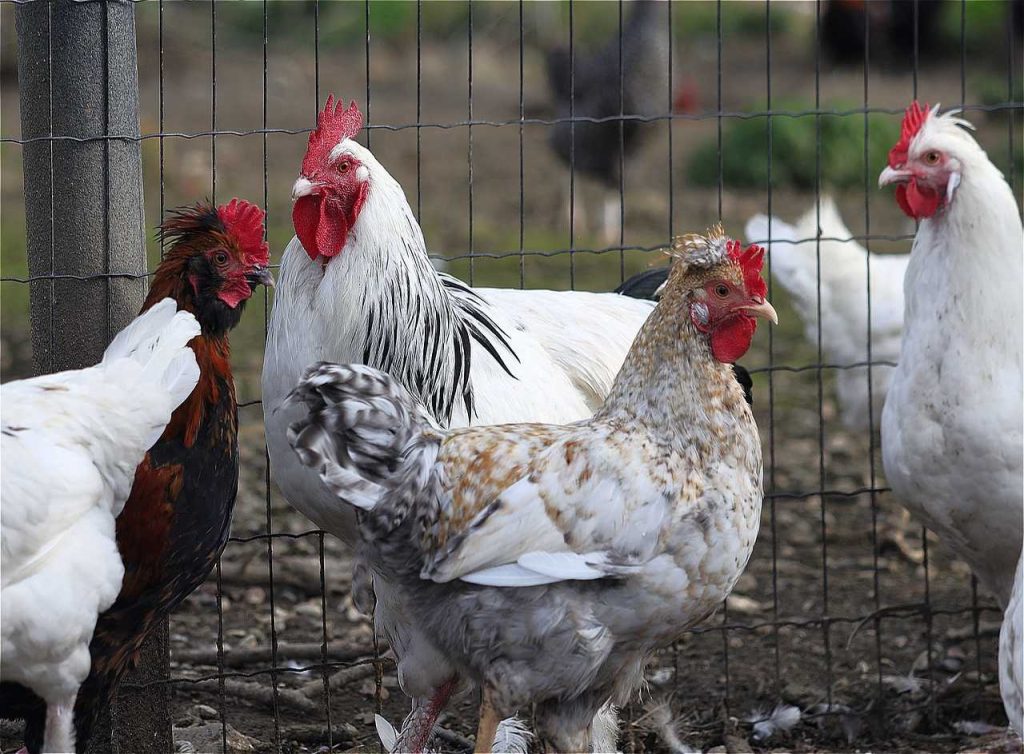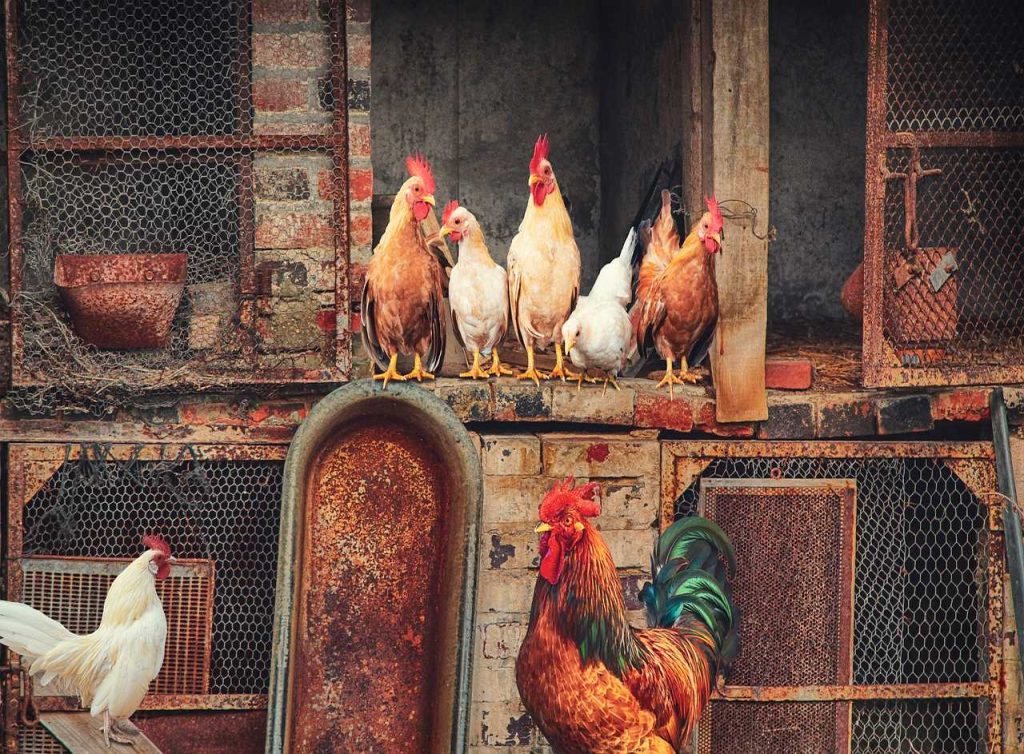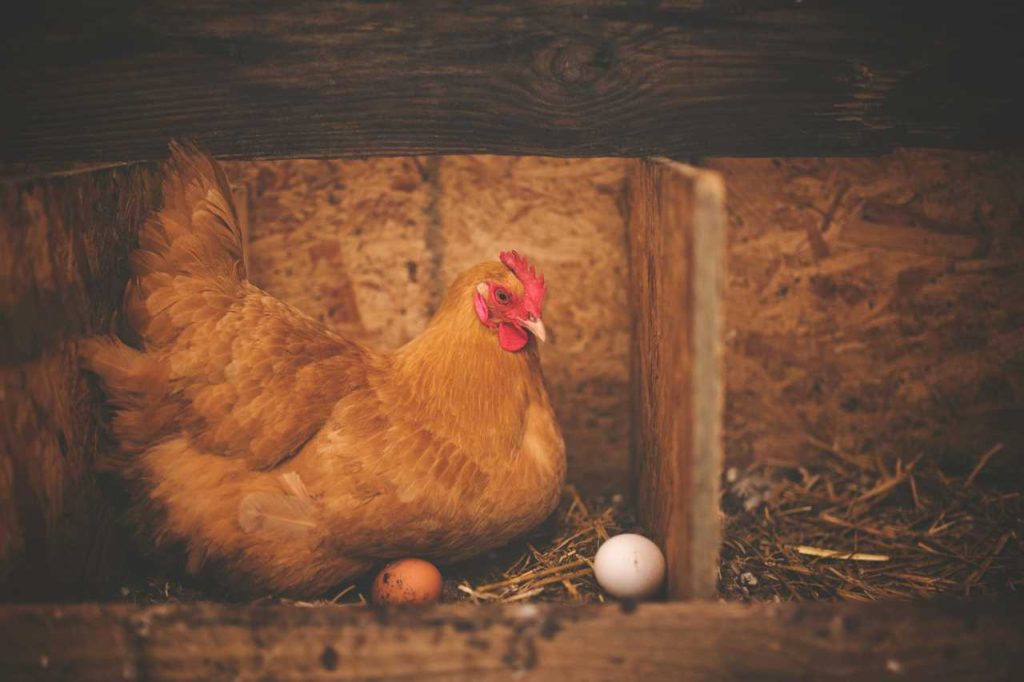Raising chickens in your backyard can be an incredibly rewarding experience, whether you’re seeking fresh eggs, homegrown meat, or simply enjoy their company as pets. However, to keep your chickens healthy, safe, and productive, it’s essential to invest in a well-designed chicken coop that meets their needs. The right coop can make all the difference between happy, thriving hens and constant issues with predators, harsh weather, and maintenance challenges. So, what essential features should a modern chicken coop include?
In this blog, we’ll explore the must-have features for a modern chicken coop that not only ensure your chickens’ comfort and productivity but also simplify your responsibilities as a chicken owner. Let’s dive into the key elements that every well-constructed chicken coop should offer.

1. Adequate Space
Providing enough space for your chickens is one of the most crucial aspects of a modern chicken coop. Chickens require room to roam, stretch their wings, and engage in natural behaviors like scratching and dust bathing. Cramped conditions can lead to stress, aggression, and health issues, so it’s vital to ensure your flock has both indoor and outdoor space.
Indoor Space
Each chicken requires at least 2-3 square feet of indoor space in the coop. This area is essential for sleeping, resting, and shelter during inclement weather. For example, if you have a flock of five chickens, your coop should provide at least 10-15 square feet of interior space.
Outdoor Space (Run)
In addition to indoor space, chickens need access to an outdoor run for foraging and exercise. Aim for at least 8-10 square feet per chicken in the outdoor run area. A covered run will also protect your chickens from predators and the elements, allowing them to stay active and happy.
2. Ventilation and Airflow
Proper ventilation is vital for maintaining a healthy environment inside your chicken coop. Chickens produce significant moisture through their breath and droppings, which can lead to poor air quality, excess humidity, and ammonia buildup. Without good ventilation, this moisture can cause respiratory problems and create an unhealthy living environment.
Ventilation System
Your chicken coop should include vents or windows that allow for consistent airflow. Positioning ventilation near the roof is ideal, as it allows warm, moist air to escape without creating drafts directly on the chickens. Good ventilation reduces the risk of frostbite in winter and helps keep the coop cool in summer.
Draft-Free Zones
While ventilation is important, chickens need protection from drafts, especially at night or during colder months. Ensure that the coop’s sleeping area is shielded from direct drafts by using solid walls or nesting materials that block the wind while allowing for proper air circulation elsewhere in the coop.
3. Easy Access for Cleaning
Keeping the coop clean is crucial for your chickens’ health, but it shouldn’t be a back-breaking task. A modern chicken coop should be designed with easy access points to facilitate efficient cleaning.
Removable Trays or Droppings Boards
Installing removable trays or droppings boards under the perches makes cleaning up chicken waste much simpler. These trays can be pulled out and emptied regularly without disturbing the chickens, helping to keep the coop hygienic and odor-free.
Large Access Doors
Ensure access doors to the coop are large enough for you to easily reach in and clean out bedding, debris, and droppings. Consider designing the coop with hinged or sliding doors that provide access to different areas for thorough cleaning. Additionally, doors should open wide enough to allow for the easy replacement of bedding materials like straw or wood shavings.

4. Nesting Boxes
Nesting boxes are essential for any chicken coop, providing a comfortable and secure place for hens to lay their eggs. The right number and design of nesting boxes will encourage your hens to lay in designated areas, making egg collection easier and reducing the risk of dirty or broken eggs.
Number of Nesting Boxes
Generally, you’ll need one nesting box for every 3-4 hens. A nesting box should be at least 12×12 inches in size to accommodate a hen comfortably. Avoid overcrowding the coop with nesting boxes, as this could lead to territorial issues among your hens.
Nesting Box Features
Line the nesting boxes with soft bedding material, such as straw or wood shavings, to provide cushioning for the eggs and comfort for the hens. It’s also beneficial to have the nesting boxes slightly elevated off the ground, around 18-24 inches, to keep them clean and discourage chickens from roosting inside them.
5. Roosting Bars
Chickens naturally prefer to roost at night, making roosting bars an essential feature for their comfort and safety. Roosting helps keep chickens off the ground while they sleep, reducing their exposure to droppings, parasites, and cold, damp conditions.
Roosting Bar Placement
Install roosting bars at least 18 inches off the ground, ensuring enough space for each chicken to perch comfortably. Each chicken needs about 8-12 inches of roosting space. Roosting bars should be placed higher than the nesting boxes to prevent hens from sleeping in the boxes and soiling the areas where they lay eggs.
Material and Design
Wooden roosting bars with rounded edges are ideal, as they mimic the natural shape of tree branches, making them more comfortable for chickens to grip. Avoid metal or plastic bars, as they can become slippery or cold, particularly in winter.

6. Predator Protection
One of the most critical aspects of designing a modern chicken coop is protecting your chickens from predators. Foxes, raccoons, and even neighborhood dogs can pose constant threats, so your coop needs to be built with security in mind.
Secure Fencing and Wire Mesh
Surround your coop’s outdoor run with a sturdy fence made of strong wire mesh with openings no larger than 1/2 inch. Hardware cloth is often recommended over traditional chicken wire due to its strength and resistance to predator attacks. Bury the fence at least 12 inches underground to prevent predators from digging underneath the run.
Latches and Locks
Use robust latches and locks on all coop doors, windows, and access points. Some predators, like raccoons, can figure out simple latches, so opt for complex or double-locking mechanisms that they cannot easily manipulate.
Predator-Proof Flooring
Elevate the coop off the ground or use a solid, secure floor to prevent predators from digging in from below. For coops that are directly on the ground, a wire mesh base can help deter digging predators.
7. Insulation and Weatherproofing
While chickens are relatively hardy animals, they still require protection from extreme temperatures, rain, wind, and snow. A modern chicken coop should be well-insulated and weatherproofed to keep your flock comfortable year-round.
Insulated Walls and Roof
Adding insulation to the walls and roof of your coop helps regulate temperature, keeping it warm in winter and cool in summer. Insulation also helps maintain proper humidity levels, reducing moisture buildup that can lead to respiratory problems and frostbite during cold weather.
Weatherproof Roofing Materials
Use durable, waterproof materials like metal or asphalt shingles for the roof. Ensure the roof has a slight slope to allow rainwater and snow to slide off easily, preventing leaks and water accumulation inside the coop.

8. Lighting for Egg Production
Hens need about 14-16 hours of daylight to maintain consistent egg production. During winter, when daylight hours are shorter, it’s advisable to install supplemental lighting in the coop to keep your hens laying.
Artificial Lighting
A simple LED or energy-efficient bulb set on a timer can provide the necessary light. Aim to have the lights turn on early in the morning to simulate longer daylight hours. Be cautious not to keep the lights on for more than 16 hours, as extended light exposure can stress the chickens and negatively impact their health.
9. Food and Water Stations
A modern chicken coop should have designated areas for food and water that are easily accessible for both the chickens and the owner. Proper placement and design of these stations can minimize waste, reduce mess, and ensure all chickens have access to essential resources.
Elevated Feeders and Waterers
Elevating feeders and waterers off the ground helps prevent contamination from dirt and droppings. This setup also reduces the likelihood of chickens spilling food or water, which can attract pests like rodents. Consider using automatic or gravity-fed feeders and waterers for a steady supply without frequent refills.
Protect from the Elements
If your food and water stations are located outside in the run, ensure they’re covered to shield them from rain, snow, or sun exposure. Wet food can quickly become moldy, and water dishes can freeze in winter, so consider weather-resistant designs or heated waterers for colder climates.
10. Access to Dust Baths
Chickens love dust bathing as part of their natural grooming routine. Dust baths help them control parasites like mites and lice while keeping their feathers clean and healthy.
Dedicated Dust Bath Area
Provide a designated dust bath area inside the coop or in the run. Fill this area with a mixture of dry dirt, sand, and wood ash to create the ideal dust bath environment. Keeping the area dry and sheltered from rain is crucial to ensure the chickens can enjoy dust bathing year-round.
Conclusion
Designing a modern chicken coop requires thoughtful consideration of your flock’s needs, as well as your own convenience. From adequate space and ventilation to predator protection and easy maintenance, these must-have features will help you create a safe, comfortable, and productive environment for your chickens. With the right setup, you’ll enjoy healthier, happier hens and a steady supply of fresh eggs.
Whether you’re building a coop from scratch or purchasing a pre-made one, investing in these essential features will pay off in the long run. Happy chickens are productive chickens, and a well-designed coop is the foundation of a thriving flock.
